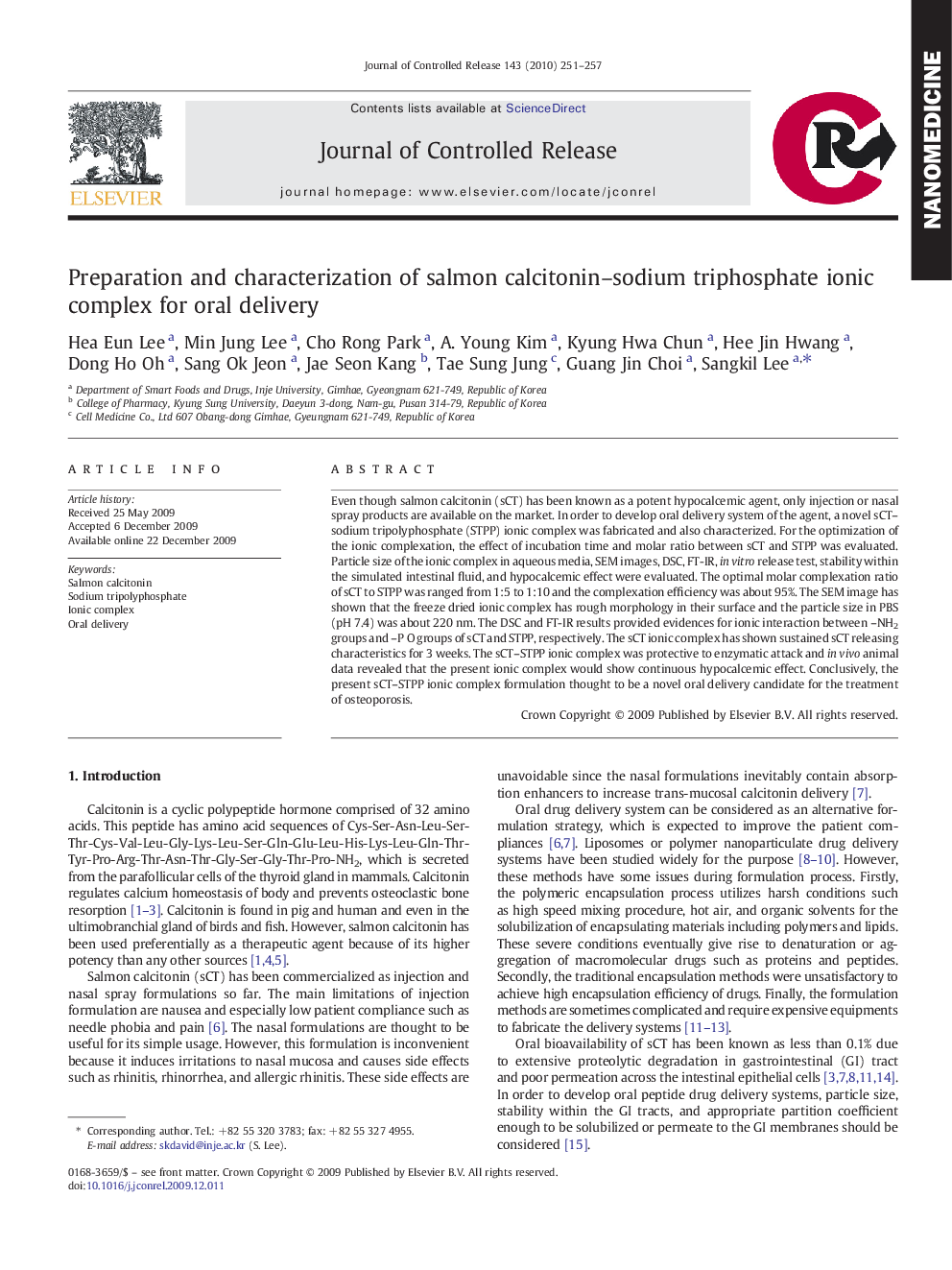| Article ID | Journal | Published Year | Pages | File Type |
|---|---|---|---|---|
| 1425754 | Journal of Controlled Release | 2010 | 7 Pages |
Even though salmon calcitonin (sCT) has been known as a potent hypocalcemic agent, only injection or nasal spray products are available on the market. In order to develop oral delivery system of the agent, a novel sCT–sodium tripolyphosphate (STPP) ionic complex was fabricated and also characterized. For the optimization of the ionic complexation, the effect of incubation time and molar ratio between sCT and STPP was evaluated. Particle size of the ionic complex in aqueous media, SEM images, DSC, FT-IR, in vitro release test, stability within the simulated intestinal fluid, and hypocalcemic effect were evaluated. The optimal molar complexation ratio of sCT to STPP was ranged from 1:5 to 1:10 and the complexation efficiency was about 95%. The SEM image has shown that the freeze dried ionic complex has rough morphology in their surface and the particle size in PBS (pH 7.4) was about 220 nm. The DSC and FT-IR results provided evidences for ionic interaction between –NH2 groups and –P═O groups of sCT and STPP, respectively. The sCT ionic complex has shown sustained sCT releasing characteristics for 3 weeks. The sCT–STPP ionic complex was protective to enzymatic attack and in vivo animal data revealed that the present ionic complex would show continuous hypocalcemic effect. Conclusively, the present sCT–STPP ionic complex formulation thought to be a novel oral delivery candidate for the treatment of osteoporosis.
Graphical abstractSchematic diagram of particle size optimization process during ionic interaction between sCT and STPP. sCT and STPP charge as positive and negative under the pI of sCT (pI = 10.4), respectively. Two molecules ionically interact in the water solution and form nano-sized ionic complex in the vicinity of pH 9.0. Initially large particles are formed however the particle size can be optimized by incubation with mild stirring. Re-arrangement among sCT and STPP molecules forms dense and homogeneous nano-sized particles.Figure optionsDownload full-size imageDownload as PowerPoint slide
